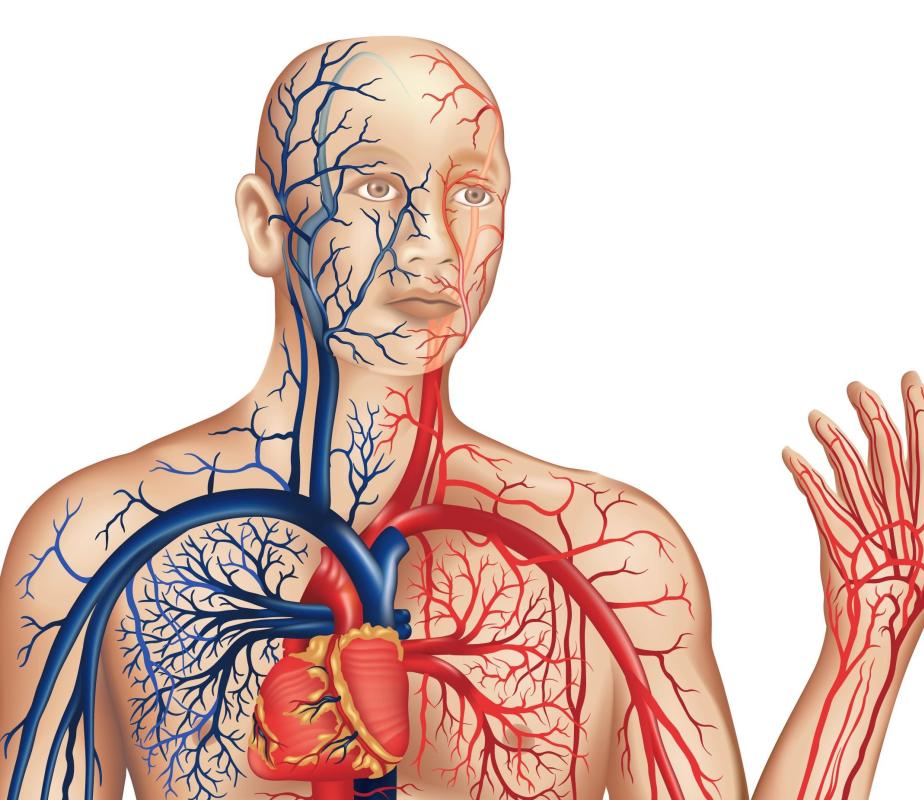At TheHealthBoard, we're committed to delivering accurate, trustworthy information. Our expert-authored content is rigorously fact-checked and sourced from credible authorities. Discover how we uphold the highest standards in providing you with reliable knowledge.
What Is the Relationship between the Circulatory System and Homeostasis?
One of the main ways the circulatory system and homeostasis are inextricably linked is through their interdependence on one another to maintain healthy “set points” throughout many of the body’s organ systems and signaling pathways. The maintenance of a life-sustaining environment within the body depends on the relationship between the circulatory system and homeostasis in a more direct and readily apparent way as well. This important relationship can be seen when essential chemicals, nutrients, and other materials are transported from the external environment or other organs and delivered via the blood and plasma of the circulatory system to the places that they are needed. In turn, it is the circulatory system that transports the waste from the cells involved in metabolism of these materials for removal from the body. If either of these primary functions of import or export becomes radically disturbed, the body may fail to perform life-sustaining functions or the buildup of toxins may cause pathological disease or metabolic poisoning.
The relationship between the circulatory system and homeostasis is pertinent to every living tissue within the body. Life is supported by the blood flow initiated by the contraction of the heart muscle, which must be strong enough and exhibit a significant consistency in order to deliver the needed materials in sufficient amounts to the individual cells so that homeostatic function of their associated tissue is maintained. Perhaps the most important substance that is transported to individual cells is oxygen. The overwhelming majority of cells in the body depend primarily on oxygen to generate the chemical reactions that sustain homeostatic balance, which includes primary survival functions like overall bodily temperature regulation. In turn, after these cellular chemical reactions are complete, if the circulatory system did not function to carry away the metabolic waste product carbon dioxide, the body’s cells, tissues, and organs would asphyxiate and ultimately die.

Many factors are considered when relating the circulatory system and homeostasis. Numerous “set points” ensure that the internal environment surrounding each body cell is healthy and life-sustaining, despite inevitable changes that are introduced into the homeostatic equation. The relationship seen between the circulatory system and homeostasis is formed, for the most part, by the system being able to change the properties of body fluids; like the blood, plasma, and lymph. These bodily fluids must be constantly monitored by the circulatory system via its connections with the central nervous system to adjust factors like salinity, acidity, and temperature. For example, the interdependence of the circulatory system and homeostasis of the immune system through lymphatic pathways keeps the body from succumbing to the daily onslaught of potentially deadly pathogens from the external environment.
AS FEATURED ON:
AS FEATURED ON:













Discuss this Article
Post your comments